Many people enjoy indulging in rum-based cocktails or even taking rum shots, but you’ll find that most are only familiar with two or three types of rum—and usually only really know one by heart.
We don’t blame them, as there’s no single way to make rum that everyone will agree on. Because of that, and the long and interesting history of rum, many times have emerged over the past centuries, and some of them are so contrasting that you’d think they’re entirely different drinks.
Most different types of rum emerged in various regions, mostly in Latin America and the Caribbean, due to the circumstances there in the past. For example, if people moved to a new country and wanted to make rum but didn’t have the ingredients they were familiar with, they’d make do with what they had. And slowly, the new trendy drink would catch on and exceed its predecessor in popularity.
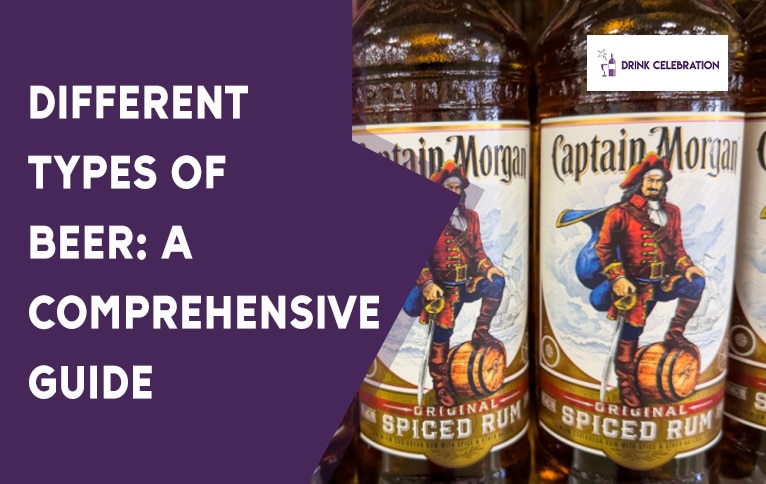
But what are the most popular types of rum? We’ll review the top 10 in this post, so stick around!
History of Rum
Although there’s some evidence of rum’s existence as far back as the 14th century, it most likely originated in the Caribbean around the 17th century.
This makes sense, considering many Caribbean islands have thriving conditions for sugarcane production. The tale says that the molasses from sugar cane juice was fermented into rum, then it gained wide popularity from there, especially among Europeans.
Different Types of Rum
- White Rum
- Dark Rum
- Gold Rum
- Spiced Rum
- Overproof Rum
- Flavored Rum
- Navy Rum
- Rhum Agricole
- Spanish-Style Rum
- English Rum
1. White Rum
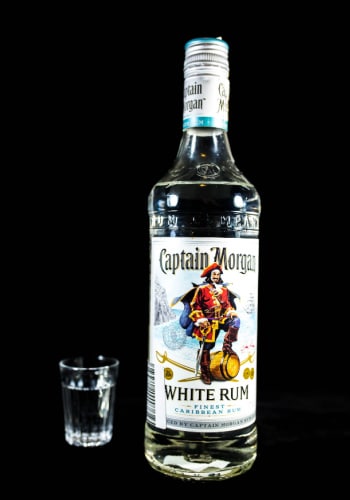
We’re starting with the type of rum that most people would think of as the most neutral in terms of flavor, and that is white rum.
Also known as light rum or clear rum, this type is characterized by its smooth and fairly mild flavor profile, which happens due to the much shorter aging process that can be as low as one year or less. Light rum is also typically aged in stainless steel and filtered after the aging process.
All these procedures mean that white rums don’t absorb much of the characteristics of the barrel, of which there aren’t many, to begin with.
As such, the result is a colorless and versatile white rum, typically around 40% ABV in the US, that can be used in a variety of cocktails with excellent results.
2. Dark Rum
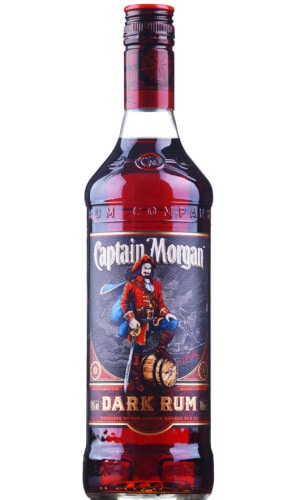
The general rule with rum production is that the longer it ages in a barrel, the darker it becomes as it picks up notes from the cask material. And when you age it in charred oak barrels, you get a result that’s the direct contrast of white rum, that is, dark rum.
Dark rum is typically an umbrella term that refers to various shades of darkness past a certain point. And since rums can be aged indefinitely, the really dark ones are often called black rum.
As dark and black rums age, they pick up a deeper flavor profile of caramel, toffee, or molasses. This makes it less versatile for cocktails, but it also means that you can enjoy dark rum gracefully on its own and enjoy the complexity of each sip.
But even the deeper black rums can be turned into cocktails by diluting them with other ingredients.
Another popular way to use these dark and robust rums is by incorporating them into dessert recipes
3. Gold Rum

Gold rum, also known as golden rum, pale rum, or amber rum, is a level of color and flavor that’s between white rum and dark rum.
Again, this is primarily due to the varying durations of the aging process. Golden rums are aged in oak barrels for several years until they attain their distinct color with amber or golden hues, but not long enough to darken and reach higher depths of flavor profiles.
The result is a beautiful and satisfying color with noticeable notes of buttery sweetness that can be enjoyed on the rocks. But it’s also light enough to enjoy in various cocktails.
4. Spiced Rum
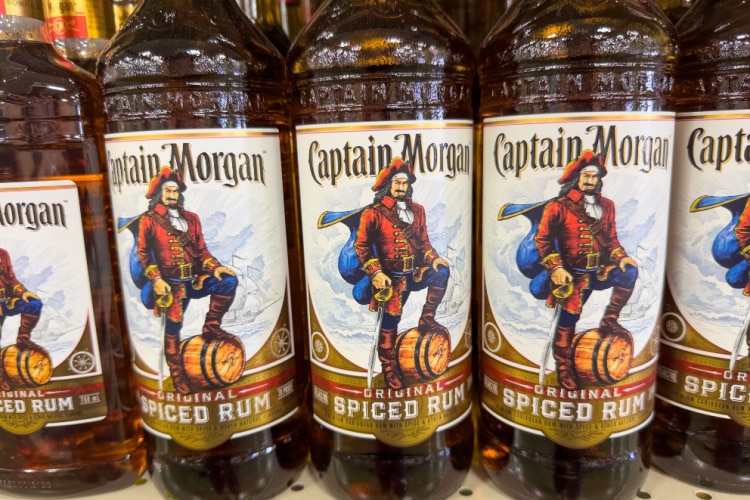
Spiced rum refers to any sort of rum that’s infused with spices or herbs to create more depth in flavor. Some of the most commonly used spices for infusing are cinnamon, nutmeg, ginger, vanilla, allspice, anise, and clove.
Note that any rum can be spiced regardless of its color and flavor profile, but you’ll find that most are based on gold rum or black rum. In contrast, white rums are rarely infused.
The result is the same familiar deep flavor profile of aged rum but is noticeably sweeter with hints of earthiness and a more pungent aroma that feels hearty, especially in winter.
Spiced rum can easily be enjoyed on its own, either on the rocks or neat. But it can also be used to concoct some brilliant cocktails.
5. Overproof Rum

After distilling rum to a high-proof degree, most producers will dilute it with water to make it more palatable until it’s all the way down to around 40% ABV. But if you use less water in the dilution process, you get a more potent drink in the form of overproof rum.
Overproof rums are typically in the 57% to 70+% ABV range, making them way too strong to enjoy on their own, even though they can be produced with a gold or dark rum base.
That’s why overproof rum is more popular in fancy cocktails and dessert recipes, where its potency shines in small quantities.
6. Flavored Rum
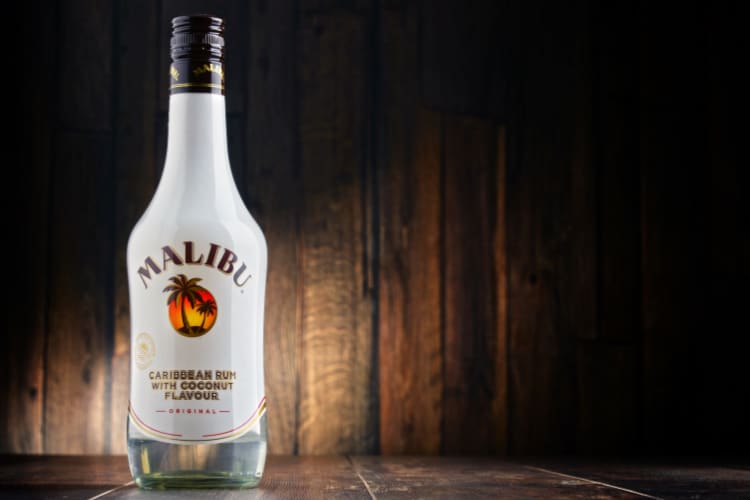
Flavored rum is quite similar to spiced rum in that both are often made with longer-aged rums (gold and dark) and are infused with other ingredients during distillation to give them additional flavor.
But unlike their spiced equivalent, which uses herbs and spices, flavored rums are infused with more palatable foodstuff. Tropical fruits are an overwhelmingly popular option, with pineapple, mango, passion fruit, blackcurrant, banana, and coconut receiving high acclaim.
The sky’s the limit on this one, as there are countless items to infuse your rum with. For instance, another popular option, especially for fans of sweet drinks, is flavored rums with chocolate or caramel.
All those make for excellent drinks on the rocks or neat, but can also be enjoyed in various cocktails.
7. Navy Rum
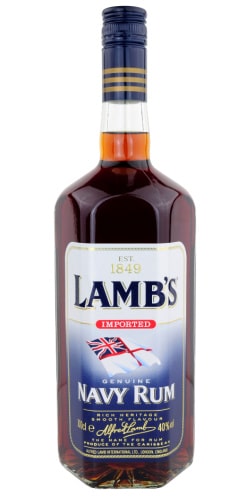
Rum has a long maritime history dating back to the European exploration era, and navy rum is particularly associated with the British Royal Navy.
Navy rum is thought to have originated with the popularity of maritime trade in the 17th century in the Caribbean Sea, particularly by British privateers-turned-pirates who collected their beloved rums from island colonies and infused them together to create a powerful 100-proof (57% ABV) mixed rum.
But navy rum wasn’t just popular among those pirates, as even the British navy started rationing different types of Jamaican rums to its soldiers, all around the same proof strength.
Today, navy rum survives as a strong drink with a complex flavor profile that’s excellent in mixed drinks.
8. Rhum Agricole

Rhum agricole (meaning “agricultural rum”), also known as French-style rum, is a very distinct twist on most other types of rum that involves dropping the use of molasses (which is the main ingredient in rum) in favor of fresh sugarcane juice.
Just like most types of rum, rhum agricole developed in the European exploration era, specifically in French colonies like Guadeloupe, Martinique, and Haiti.
Similar to other rums, rhum agricole can also be aged anywhere from a few months to several years. Once it passes the three-year mark, it’s known as rhum vieux, meaning “old rum.”
Whether you opt for light or dark rhum agricole, you’ll notice its flavor profiles are fairly similar to standard types of rum but with the more earthy and fruity notes of the fresh cane syrup.
Many of them can also be enjoyed directly on the rocks or in delicate cocktails.
9. Spanish-Style Rum
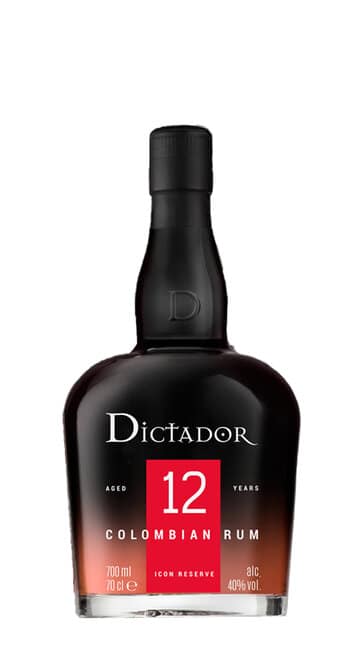
Spanish rum, also known as ron añejo, has a very similar story to the French rhum agricole, but it originated from and continues to develop in former Spanish colonies like the Dominican Republic, Cuba, and Puerto Rico.
Spanish rums are also distinguished by their unique and intricate distillation method, which relies on column stills and combines it with charcoal filtering to produce a smooth taste that’s light, palatable, and works well in cocktails.
10. English Rum
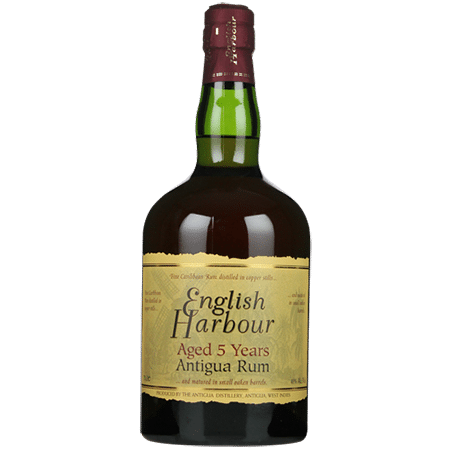
English rums are popular for their darker color and strong flavor that retains a very close profile to the original molasses used in early production stages, thanks to pot distillation techniques.
English-style rums originated in British colonies around the 18th century, especially in islands that are now part of the Bahamas, Guyana, Jamaica, the British Virgin Islands, and Trinidad and Tobago.
And while English rums are hard to find nowadays, they’re on the rise among people who enjoy the sweeter flavor profile on the rocks or in cocktails.
How Is Rum Produced?
Although there are no strict protocols during rum production, often relying more on traditional know-how, you can still tell it apart by the distinct production methods that distillers use to make it. Here you can learn about them in brief detail:
Preparation
First, sugar cane is harvested as close to the root as possible, where sugar concentration is often at its highest. To prepare the liquid, producers cut off the green tops of the canes, clean them, and slice them into small bits.
These bits are then placed in a press machine to be milled. This produces a decent amount of liquid, as sugar cane is about 70% water by default.
Fermentation
Once the pressed cane sugar is milled, producers add yeast and some water and leave the sugar cane juice to start fermenting. The specific type of yeast largely affects the outcome flavor and its intensity.
Fermentation duration is also one of the key differences between the types of rum. For example, light rums are often fermented in a shorter period using quicker yeast types, and vice versa.
Distillation
Distilling rum isn’t an exact science, as each distillery tends to choose the method it prefers. But regardless of the type of still, the alcohol is boiled out of the water and then re-condensed into a highly alcoholic mixture, which is then aged and blended with other ingredients to produce the final result.
Aging
Aging the rum is the last key factor in determining its type, as different aging methods and barrels result in different colors and flavor profiles.
Rum is commonly aged in bourbon whiskey casks, which allows it to absorb the dark color and spicy, fruity flavor of oak. Alternatively, rum can be aged in stainless steel barrels for a neutral color and milder flavor.
After the long aging process (typically more than a year), the rum can either be filtered to remove specific flavor notes or color hints or add additional ingredients for another desired outcome, such as caramel.
Conclusion
Hopefully, you’re now more familiar with the different types of rum, from the lighter and more palatable white rums and ron añejos, to the golden and crisp rums, and even the darker rums, whether you prefer them on their own or infused with spices or other flavorings.
Remember that rum has a complicated and widely varied history that’s deeply tied to European exploration and colonialism in the Caribbean, and some types were even influenced by rogue farm workers or pirates.
As such, you’ll never find people agreeing on a single procedural method to create the perfect rum. Simply put, how you like your rum depends on how complex you want the flavor to be and whether you want to enjoy it on its own or mix it in one of the many possible rum cocktails.